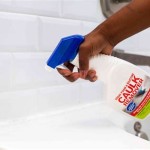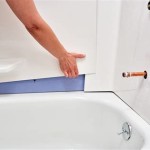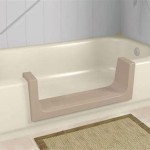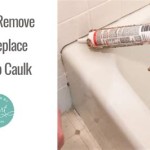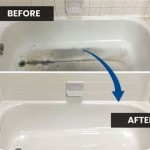Bathtub Drain Cleanout: A Comprehensive Guide
A clogged bathtub drain is a common household problem, causing inconvenience and potential water damage. Understanding the causes of drain obstructions and knowing how to effectively clean them out is essential for maintaining a functional and hygienic bathroom. This article provides a detailed guide to bathtub drain cleanout, covering prevention, identification of clogs, different methods for removal, and when to seek professional assistance.
Identifying the Cause of a Bathtub Drain Clog
The first step in addressing a clogged bathtub drain is identifying the likely cause. Most bathtub drain clogs result from a buildup of common bathroom debris. These materials accumulate over time, gradually restricting water flow until a complete blockage occurs. Identifying the primary culprit can help determine the most effective removal method.
Hair is the most frequent offender. Strands of hair, both long and short, easily wash down the drain during showering or bathing. Their texture allows them to snag on imperfections within the pipes, acting as a net to catch other debris. Over time, this hair accumulation forms a dense, matted mass that significantly restricts water drainage.
Soap scum is another significant contributor to bathtub drain clogs. Traditional bar soaps, in particular, contain fatty acids that combine with minerals in hard water to form a sticky residue known as soap scum. This scum adheres to the walls of the drainpipe, gradually narrowing the passageway. Liquid soaps and body washes can also contribute to the problem, although they generally produce less residue than bar soaps.
Shampoo and conditioner residue, like soap scum, can contribute to drain blockage. These products often contain oils and polymers that cling to the drainpipe walls, trapping hair and other debris. The buildup is especially pronounced in areas with poor water flow or existing imperfections in the drainpipe.
Other less frequent but potentially problematic materials include small objects accidentally dropped down the drain, such as toys, bottle caps, or jewelry. Even seemingly harmless items like bath bombs can contribute to clogs if they contain solid particles that do not fully dissolve. These foreign objects can easily lodge in the drainpipe, causing immediate and severe blockage.
Understanding the composition of the clog is crucial for selecting the appropriate cleanout method. A clog primarily composed of hair might require a different approach than one caused by soap scum or a foreign object. Visual inspection, if possible, or knowledge of recent bathroom habits can provide valuable clues.
Methods for Bathtub Drain Cleanout
Several methods can be employed to clean out a clogged bathtub drain, ranging from simple DIY techniques to more involved procedures. The choice of method depends on the severity and location of the clog, as well as the homeowner's comfort level with plumbing tasks.
Manual Removal: This is often the first and simplest approach. It involves manually removing visible debris from the drain opening. This can be accomplished using tweezers, pliers, or a wire hanger bent into a hook shape. Carefully insert the tool into the drain opening and attempt to pull out any visible hair, soap scum, or other debris. Repeat this process several times, rotating the tool to capture debris from all angles. This method is most effective for clogs located near the drain opening.
Boiling Water: Boiling water can be effective for dissolving certain types of clogs, particularly those composed of soap scum or grease. Carefully pour a kettle of boiling water down the drain, allowing the heat to melt away the blockage. Exercise caution when handling boiling water to avoid burns. This method is generally not recommended for PVC pipes, as the high heat can potentially damage the plastic. It is best suited for metal pipes. If the clog persists, repeat the process or try a different method.
Baking Soda and Vinegar: This is a natural and environmentally friendly alternative to chemical drain cleaners. Pour one cup of baking soda down the drain, followed by one cup of white vinegar. The mixture will fizz and bubble, helping to loosen the clog. Allow the mixture to sit for at least 30 minutes, or preferably overnight, before flushing with hot water. The chemical reaction between baking soda and vinegar helps to break down grease and dissolve soap scum. This method is generally safe for all types of pipes.
Plunger: A plunger is a classic and effective tool for dislodging drain clogs. Ensure there is enough water in the bathtub to cover the cup of the plunger. Create a tight seal around the drain opening with the plunger and repeatedly plunge up and down for several minutes. The pressure created by the plunger can help to dislodge the clog and force it down the drainpipe. After plunging, remove the plunger and check if the water drains freely. If not, repeat the process. A flange plunger, designed with a soft rubber flap, is generally more effective for bathtub drains.
Drain Snake (Plumbing Snake): A drain snake, also known as a plumbing snake or auger, is a flexible tool designed to reach deeper into drainpipes and break up or retrieve clogs. Insert the drain snake into the drain opening and carefully advance it down the drainpipe. Rotate the handle of the snake to help it navigate bends and curves. When you encounter resistance, the snake has likely reached the clog. Continue rotating the handle to break up the clog or to hook and retrieve it. Once you have removed the clog, thoroughly clean the drain snake before storing it. Drain snakes are available in various lengths and diameters, so choose one appropriate for the size of your drainpipe.
Wet/Dry Vacuum: A wet/dry vacuum can be used to suck out clogs from the drainpipe. Remove the drain cover and position the vacuum hose over the drain opening, creating a tight seal. Turn on the vacuum and attempt to suck out the clog. This method is most effective for clogs that are not too far down the drainpipe. Be sure to use the wet function of the vacuum and empty the canister frequently to prevent overflow.
When to Seek Professional Assistance
While many bathtub drain clogs can be resolved using DIY methods, certain situations warrant professional plumbing assistance. Attempting to resolve more complex plumbing issues without the necessary knowledge and equipment can potentially worsen the problem or even damage the plumbing system.
Persistent Clogs: If you have tried multiple DIY methods without success, the clog may be located deeper within the plumbing system or may be more stubborn than initially anticipated. Continued attempts to clear the clog yourself could be unproductive and potentially damaging. A professional plumber has specialized tools and expertise to access and clear deep-seated clogs effectively.
Recurring Clogs: If your bathtub drain frequently clogs, it could indicate a deeper underlying problem, such as a partially collapsed pipe or a buildup of debris in the main drain line. Addressing the symptom (the clog) without addressing the root cause will only result in continued problems. A professional plumber can diagnose the underlying issue and recommend appropriate solutions.
Slow Drainage: Even if the bathtub drain is not completely clogged, consistently slow drainage can indicate a partial blockage that is gradually worsening. Addressing the problem early can prevent a complete clog from forming. A professional plumber can inspect the drainpipe and identify the cause of the slow drainage.
Evidence of Drain Damage: If you notice any signs of drain damage, such as leaks, cracks, or corrosion, it is essential to seek professional assistance immediately. Attempting to clear a clog in a damaged drainpipe could exacerbate the damage and lead to more serious problems, such as water damage to your home.
Chemical Drain Cleaner Concerns: While chemical drain cleaners can sometimes be effective for clearing clogs, they are also highly corrosive and can damage drainpipes, especially PVC pipes. Furthermore, they pose a risk to human health and the environment. If you are considering using a chemical drain cleaner, it is generally safer to consult with a professional plumber first. A plumber can assess the situation and recommend a safer and more effective alternative.
Unfamiliar Plumbing Systems: If you live in an older home or have a complex plumbing system, it is generally best to leave drain cleaning to the professionals. Older plumbing systems may be more fragile and susceptible to damage. Attempting to clear a clog in an unfamiliar plumbing system could result in costly repairs.
When seeking professional plumbing assistance, be sure to choose a licensed and experienced plumber with a good reputation. Ask for references and read online reviews before hiring a plumber. A qualified plumber will be able to accurately diagnose the problem and provide effective and long-lasting solutions.

Top 5 Tips On How To Unclog A Bathtub Drain Smiley Cleaning

How To Unclog A Bathtub Drain Without Chemicals

4 Ways To Clean A Bathtub Drain Wikihow

How To Unclog Bathtub Drain Pipes Save 200 In Two Minutes

How To Unclog A Bathtub Drain Without Chemicals Family Handyman

5 Easy Ways To Unclog Bathtub Drain

How To Unclog A Bathtub Drain 11 Diy Clog Busters

How To Remove A Bathtub Drain The Home Depot

How To Unclog A Bathtub Drain Without Chemicals Family Handyman

Bathtub Drain Cleaning Asap 4 Service
Related Posts

